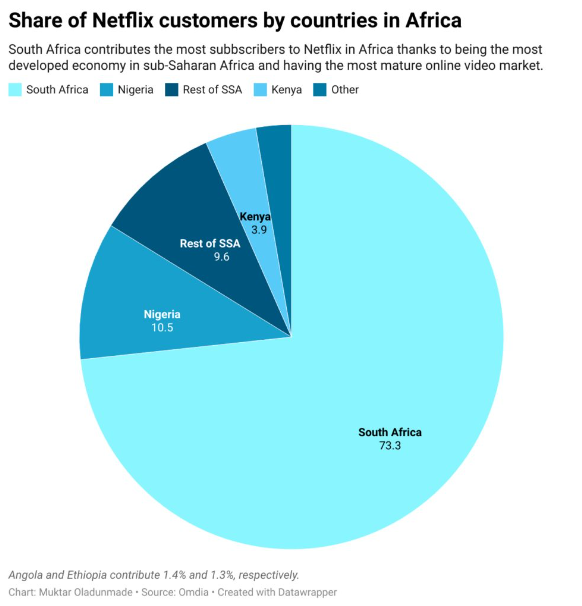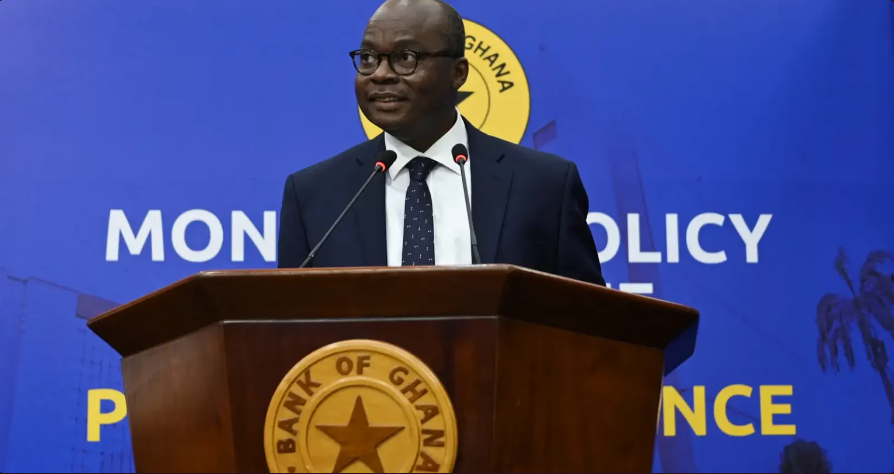Netflix, the global leader in paid video streaming, is experiencing a decline in market share in Africa due to heightened competition from Showmax and Amazon Prime. While Netflix commanded approximately 40% of the African streaming market in 2021, recent industry data indicates a reduced dominance. According to Omdia Research, a tech research firm, the California-based company now holds 35%, relinquishing its market leader position to Showmax, which now claims 40% of the continent’s streaming market.
The intensifying competition in the region, coupled with the strategic moves of other players like Amazon Prime and Showmax, has led to a contraction of market share for Netflix. Showmax, with 1.8 million subscribers, has emerged as the new market leader. Showmax CEO Marc Jury noted a 26% year-on-year growth in paid subscribers over the past four years, attributing it to a focused approach to local content production. Additionally, the company allocated $1 billion to content production and acquisition on the continent in the financial year ending in 2023.

According to data from Digital TV Research, Africa had 41 million pay-TV subscribers at the end of 2022, and video streaming constituted less than 10% of this subscriber base. Despite the efforts of streaming giants like Netflix and Showmax, which employed strategies such as investing in new content and reducing subscription prices, growth in the streaming market across the continent has been sluggish. IrokoTV, Africa’s oldest streaming service, reported a significant setback, with a 76% decline in active users in December 2022, raising concerns about the overall performance of the streaming industry in the region.
Netflix ventured into the African market in 2016 and has faced various challenges, including high broadband costs, unstable internet infrastructure, and low household income. The streaming giant adopted a dual approach in Africa, combining local content licensing, such as Nigeria’s Black Book from local studios, with the production of original content, exemplified by shows like The Origin: Madam Koi-Koi. This comprehensive strategy has incurred $175 million over six years, as reported by the streaming service in April. Although Nigeria boasted the most licensed content in Africa, it received only $23 million, while South Africa claimed the lion’s share with $125 million. Despite this, Netflix has more than recouped its investment, generating over $230 million in revenue over the last two years.
After swiftly amassing 400,000 subscribers within its initial two years on the continent, Netflix has added 1.2 million subscribers in the past four years. South Africa remains Netflix’s largest market, contributing 73.3% to its subscriber base. Meanwhile, Nigeria, Africa’s most populous country, represents a smaller market share at 10.5%, despite extensive marketing efforts and a significant content acquisition push.
With the stagnation of subscriber numbers in mature markets like the US and Europe, Netflix has been aggressively pursuing international expansion to offset any decline in its home market. The streaming platform’s growth in Africa, spurred by a move to reduce prices in specific markets in the first quarter of the year, has seen a 6.8% increase in subscribers. This subscriber growth has directly translated into a 13.7% rise in revenue, surpassing $135 million in 2022.
However, Omdia Research suggests that one impediment to Netflix’s subscriber growth in Africa is the low penetration of credit and debit cards in many regions, affecting payment methods for the streaming platform.



